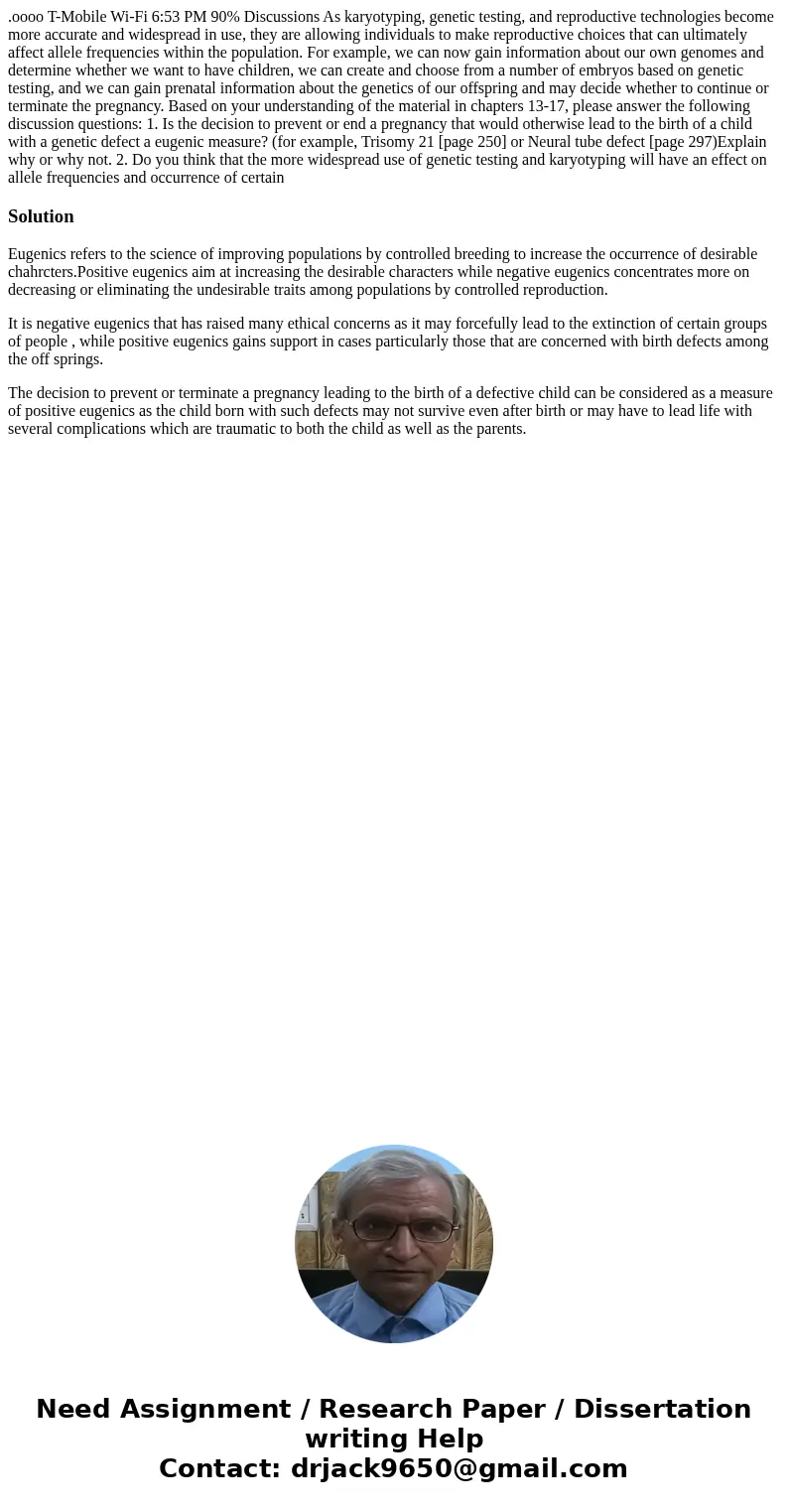.oooo T-Mobile Wi-Fi 6:53 PM 90% Discussions As karyotyping, genetic testing, and reproductive technologies become more accurate and widespread in use, they are allowing individuals to make reproductive choices that can ultimately affect allele frequencies within the population. For example, we can now gain information about our own genomes and determine whether we want to have children, we can create and choose from a number of embryos based on genetic testing, and we can gain prenatal information about the genetics of our offspring and may decide whether to continue or terminate the pregnancy. Based on your understanding of the material in chapters 13-17, please answer the following discussion questions: 1. Is the decision to prevent or end a pregnancy that would otherwise lead to the birth of a child with a genetic defect a eugenic measure? (for example, Trisomy 21 [page 250] or Neural tube defect [page 297)Explain why or why not. 2. Do you think that the more widespread use of genetic testing and karyotyping will have an effect on allele frequencies and occurrence of certain
Eugenics refers to the science of improving populations by controlled breeding to increase the occurrence of desirable chahrcters.Positive eugenics aim at increasing the desirable characters while negative eugenics concentrates more on decreasing or eliminating the undesirable traits among populations by controlled reproduction.
It is negative eugenics that has raised many ethical concerns as it may forcefully lead to the extinction of certain groups of people , while positive eugenics gains support in cases particularly those that are concerned with birth defects among the off springs.
The decision to prevent or terminate a pregnancy leading to the birth of a defective child can be considered as a measure of positive eugenics as the child born with such defects may not survive even after birth or may have to lead life with several complications which are traumatic to both the child as well as the parents.

 Homework Sourse
Homework Sourse